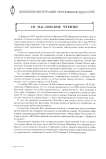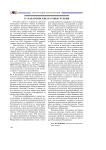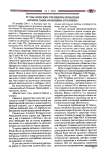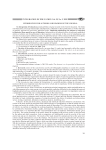Статьи журнала - Интеграция образования
Все статьи: 2517
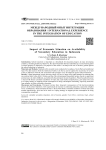
Impact of economic situation on availability of secondary education in Indonesia
Статья научная
Introduction. School transition is important as a benchmark for education progress in many developing countries, including Indonesia. Moreover, the school transition has been identified as a crucial turning point in school progress in Indonesia. The purpose of the article is to analyze the role of income, gender against the school transition in Indonesia. Materials and Methods. Methods in this research were conducted in two phases, fixed effect and conditional logit. The data used are from the Indonesian Family Life Survey and to capture the occurrence of several events in Indonesia with the risk associated with economic crisis in Indonesia against school transition. Results. A sharp permanent income decrease shock will have a larger effect upon parental investment than one realized later in the child's lifetime and the effect of permanent household income shocks is significant and decreases in older childhood, as predicted by the permanent income hypothesis. When household income is faced with shocks constraint conditions of loans and credit market imperfections, girls tend to be used as a coping strategy to support private consumption in doing consumption smoothing, especially transition from primary to junior secondary education. Discussion and Conclusion. Permanent income have long-term consequences of the decision-making process in the school transition. Girls experienced an increase in continuing education, especially at higher levels. Furthermore, when household income is faced with shocks constraint conditions of loans and credit market imperfections, girls tend to be used as a coping strategy to support private consumption in doing consumption smoothing.
Бесплатно
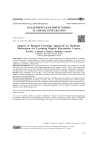
Impact of flipped learning approach on students motivation for learning digital electronics course
Статья научная
Introduction. Various educational institutes follow various approaches to teaching-learning. Compared to the conventional learning approach. a flipped learning/inverted classroom approach was chosen to test students' variability in academic performance and level of motivation through the ARCS model (attention. significance. confidence. satisfaction). Materials and Methods. Keller's Motivation Survey of Instructional Materials was selected to assess the effect (in terms of motivation) of the flipped approach on the students. Keller's ARCS motivation model was the basis for this survey which includes four motivational factors: attention. significance. confidence. and satisfaction. The multiple-choice test was conducted to measure the students' academic performance. Results. After completion of the module. it was noted that significant improvements took place in the students' academic performance. attention. confidence. and level of satisfaction. The relevance factor had not experienced much difference. Discussion and Conclusion. The researchers' key goal. according to previous reports. is to integrate various teaching-learning approaches in primary. secondary. k-12. etc.; engineering education has yet to be explored. The research aims to determine the level of academic achievement and motivation of the second year B. E. students for digital electronics course in the flipped learning approach as opposed to conventional teaching approach. The results can be bettered by incorporating parameters such as students' perception. learning attitude. critical thinking skills. etc.
Бесплатно
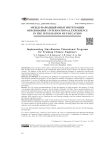
Implementing Sino-Russian educational programs for training Chinese engineers
Статья научная
Introduction. The relevance of this study is determined by the gradual expansion of contacts between the PRC and the Russian Federation in the educational sphere and the need to improve the national education systems. The purpose of the article is to identify methodological problems in organizing Sino-Russian educational programs for training engineers for the People's Republic of China and to propose the optimal solution to these problems. Materials and Methods. In considering the problems of organization of the educational process for joint Sino-Russian educational programs, we use empirical methods: description, content analysis, comparison and synthesis. A survey of teaching staff and students was conducted. Students and teachers, who took part in the joint program of Saint Petersburg Electrotechnical University and Xuzhou University of Technology were selected to be interviewed. The survey also involved teaching staff and students of Jiangsu Pedagogical University. Results. We will suggest recommendations for the development of joint programs, the purpose of which is to prepare highly qualified engineers for the People's Republic of China. These recommendations will improve the educational process, the quality of the professional training of Chinese students, enhance their level of proficiency in the Russian language. Our results suggest that to improve the quality of training of Chinese engineers who receive two diplomas, it is necessary to take into account the motives of Chinese students, their cognitive style of learning, the used learning strategies and the national characteristics of the Chinese education system. Discussion and Conclusion. The results of this study may be useful to educators involved in collaboration activities between educational institutions of different countries. Following the proposed recommendations, we expect teachers in special subjects to easily write textbooks, including digital ones that suit the topical students' needs and enable teaching staff efficiency.
Бесплатно
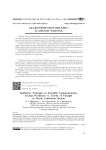
Статья научная
Introduction. The issue of lexical redundancy in academic writing remains crucial. Research based on Russian-language corpora is vital for the development of effective targeted academic writing courses that meet the unique needs of universities. This paper aims to identify factors through examples of wordiness in the Conclusion sections of theses to alter the design of courses broadening academic writing skills to fight against textual redundancy at various educational levels.
Бесплатно
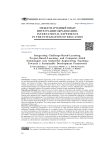
Статья научная
Introduction. Teaching industrial engineering in the second decade of the 21st century requires problem-solving and decision-making competencies oriented towards sustainable development. The growth of information metrics, the Internet of Things, virtual and augmented reality, and Artificial Intelligence bring more diverse, complex and imprecise challenges. This article aims to show a framework employing Challenge-based-learning, Project-based-learning and Computer-Aided technologies as dynamic resources supporting the comprehensive teaching of industrial engineers for industrial solutions oriented towards sustainable development. Materials and Methods. Our research involved a systemic analysis of the framework variables, the stages, and the partial results of its application in three academic years research. We selected several case studies to evaluate the professional competencies related to Sustainable Development Goals of industrial engineering students, using active learning tools integrated with Computer-Aided technologies. These cases illustrated the acquisition of Sustainable Development Goals competencies. Two simultaneous Latin American scenarios were examined (Mexico and Cuba). Results. Its main contribution is an appropriate framework for using Challenge-based-learning, Project-based-learning and Computer-Aided technologies as resources to develop professional competencies in industrial engineering and sustainable development. The control groups results demonstrate the utility, relevance, and accuracy of the proposed framework. Discussion and Conclusion. The study of the theoretical and methodological components of teaching Industrial Engineering, emphasizing competencies, at two universities in Latin American countries revealed the need to understand Computer-Aided technologies as a complex process. The proposed framework considers Computer-Aided technologies per the typologies of selected competencies integrated into the curricular design, including Challenge-based-learning and Project-based-learning, oriented toward the Sustainable Development Goals. The authors’ conclusions contribute to the development of active learning methods in engineering, supported by the application of CAD/CAM/CAE tools and focused on the fulfillment of sustainable development objectives. The materials of the article will be useful for the teaching of Industrial Engineering from a digital transformation perspective, contextualized in sustainable development environments.
Бесплатно
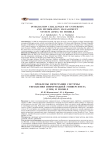
Integration challenges of university and information management system (UIMS) to Moodle
Статья научная
Introduction: in 2006 an International Ataturk Ala-Too University (IAAU) began to adopt internationally recognised Bologna system, which was initiated by the Ministry of Science and Education of Kyrgyz Republic because of problems of managerial and educational problems at universities in Kyrgyzstan. Consequently, IAAU had to improve its information and grading system and created University Information and Management System (UIMS), which was developed by the university professional team including the author. At the same time, the university began to apply a Moodle software, which delivers open source management system programs, in order to appropriately manage teaching processes and manage courses online. Materials and Methods: the methodological basis of the research are descriptive method, analysis, and comparison. Results: however, the IAAU faced some challenged issues in the application of the two innovation, which was the integration challenges of those Moodle and UIMS. Hence, the main purpose of this study is to demonstrate benefits of Moodle and UIMS linking challenges. at first, this paper informs Moodle functions, features, advantages and disadvantages in a shortly manner and UIMS management features and primary functions, which included six fundamentally crucial processes with some graphical representations. In addition, the analysis and methodologies of two systems through identifying advantages and disadvantages for the possible integration. Discussion and Conclusions: at the end, some challenged issues were identified from analysis results, also Moodle and UIMS benefits were demonstrated in the International Ataturk Ala-Too University.
Бесплатно
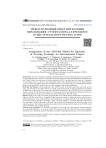
Integration of the Assure model for bachelor of nursing training: an international project
Статья научная
Introduction. The active integration of digital technologies into the modern educational process is an urgent task for the global education ecosystem. In this paper, within the framework of the joint international educational project “Digital Toolbox for Innovation in Nursing Education (I-BOX)”, conducted under the Erasmus+ Programme of the European Union, we present a new instructional design of the educational process using digital technologies on an electronic platform, based on the ASSURE model. The aim of the study is to design digital educational process using the ASSURE model with a view of its integration into electronic platforms. Materials and Methods. The development of the ASSURE model for instructional design was based on three stages. The first stage involved the analysis of available instructional models in order to determine the feasibility of application for the project. The second stage included the adaptation of the ASSURE model for instructional design as consistent with the project objectives. The third stage covered the definition and integration of modern digital technologies in the process of instructional design following the ASSURE model. Results. Based on the results of the study, the participants of the I-BOX Strategic Partnership Consortium developed an ASSURE model that can be applied for the instructional design in educational process when the use of digital technologies (video, audio, podcasts) and the placement of learning materials on an electronic platform are required. Project participants developed a guide “ASSURE MODEL: Conceptual Structure of the Project and Assessment” based on the results of the study with a step-by-step description of the ASSURE model for the e-learning process. The developed educational and audiovisual e-learning materials based on the ASSURE model will be available on the electronic platform. Discussion and Conclusion. The materials of the paper will be useful when designing the educational process on an electronic platform or in an online format. The presented ASSURE model will increase the possibilities and effectiveness of teaching students from different countries using digital technologies on electronic platforms.
Бесплатно
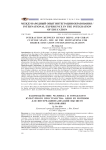
Статья научная
Introduction: the objective of this paper is to deeply and clearly explain the internationalisation of higher education from the aspect of the integration of human being with urban cultural space. Materials and Methods: the methods used in the research are mainly analytical and descriptive ones enabling to show how the integration of human being and urban cultural space promote and influence the internationalisation of higher education. Results: the motivation for the internationalisation of higher education is closely interrelated with that of urbanisation. Besides the economic and political incentives, modern urban culture, caused by globalisation, also plays a very important role in encouraging higher education internationalisation. Discussion and Conclusions: the appearance of higher education internationalisation is mediated by the alteration of the existing environment of urban culture space against the background of city internationalisa-tion. Human beings' need for self-assurance in urban culture space helps to stimulate the internationalisa-tion of higher education, and human beings promote the development of modern culture space and their separation in urban culture space accelerates the development of higher education. From the perspective of higher education internationalisation, to sort out the cultural motivation for higher education and find its suitable form for the city's internationalisation is crucial for adjusting the orientation and guaranteeing the efficacy of higher education internationalisation. From the aspect of human beings' development, the separation between urban space and human beings caused by the city's ongoing internationalisation is a pressing problem to be solved. From the aspect of the construction of urban culture space, as an important means of retaining human beings' equilibrium, urban culture promotes the internationalisation of higher education.
Бесплатно
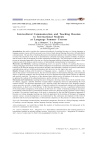
Статья научная
Introduction: the article considers the content and methods of teaching Russian as a foreign language at language summer courses with due account to (as a form of study-abroad training) the motives of intercultural communication. The specifics of teaching Russian to international students in the cultural field of Ukraine is revealed. The timeliness of the study is determined by constantly increasing academic mobility of students and the need for the development of modern educational technologies. The main purpose of the article is to present an integrated approach to Russian as a foreign language teaching at language summer courses, when cultural needs of the trainees and the motives of intercultural communication are considered. Materials and Methods: teaching methodology draws on specific methods of teaching Russian as a foreign language and models of intercultural competence development. Educational materials for practical teaching of the Russian language are presented; qualitative and quantitative methods to research intercultural communication motives (written questionnaires and interviews on key topics) are used. Results: through working with the learners of language courses - students of Austrian universities - the data on the learners' motivation factors, the most relevant topics for intercultural dialogue, some important aspects of Russian grammar, and also the data on the most popular knowledge about Ukraine are obtained and carefully analysed. The analysis of the obtained data, carried out by the authors of the study, allowed to optimise the content of the educational process and to increase its effectiveness. Discussion and Conclusions: teaching Russian to foreigners, showing a keen interest in the cultural values of Ukraine, suggests a parallel formation of intercultural competence based on understanding the local cultural realities. The presented approach to RFL teaching within the framework of the language summer courses provides not only a strong uptake of linguistic material by international students and considerable improvements in their level of proficiency in the Russian language, but also a significant enhancement of the intercultural competence of the trainees on the basis of a variety of teaching techniques and active intercultural communication of international students with native Russian language speakers when working in tandem. The practical significance of the study is determined by the fact that the proposed approach to Russian as a foreign language teaching may find wide application in the training of foreigners at language summer courses; research perspectives are determined by the continuous development of this form of education and the increased importance of intercultural competence in the practice of cultural interaction.
Бесплатно
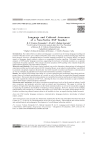
Language and cultural awareness of a non-native ESP teacher
Статья научная
Introduction. The relation between culture and language is a central issue in foreign language teaching and research where the need to give cultural content the same value as language content and language skills has been stressed. However, conceptualization of teacher language awareness, by focusing largely on formal aspects of language, largely neglects culture as a component of teacher cognition. This paper expands the category of ESP-teacher language awareness suggesting the inclusion of cultural awareness as a separate component of teacher cognition. This concept extension actualizes ESP teaching in the situation shaped by unprecedented mobility and intercultural contacts. Materials and Methods. The historic-logical method was used to determine shortcomings of pedagogical experience and the need to teach culture in ESP. Grounded theory, as an inductive methodology, was utilized to generate conceptual expansion theoretically tied with research in medical and business communication as well as with data on population movement and international scientific cooperation. Results. We defined ESP-cultural knowledge as a system comprising the permanent (know-that) and temporary (know-of) cultural manifestations in a society as well as how they are manifested through language (know-how). That system practical representation is exemplified in medicine and business English discourse. The study expands the structure of ESP-TLA, claiming the focus on cultural awareness as part of ESP discourse which fosters cultural-response education. Discussion and Conclusion. Such claim is pertinent to practitioners involved in the tourism industry, health care, economics, and academic activities such as research and development. This paper is relevant for teachers of English for Specific purposes in the fields mentioned above as well as for researchers engaged in analyzing the problems and methods of teaching a foreign language. However, because of the multiple manifestations and complexity of student motivation to get ESP course, the paper acknowledges the difficulties in addressing cultural content salient to all students in class, an aspect meriting further research.
Бесплатно
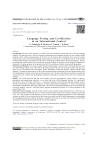
Language testing and certification in an international context
Статья научная
Introduction. The aim of this research is to define what role continuous assessment plays in foreign language teaching. We analysed some of the most frequent communication and language mistakes by our research sample students in their written communications at the B2 level. We believe these correlations have yet to be closely studied in the context of the foreign language teaching process since there is a significant increase in the number of international students entering Slovak universities for programs implemented in the Slovak language. We also researched the current interest of our non-Slovak university students in verifying Slovak language competencies through ECL testing compared to the period before 2019 in correlation with their writing skills preparation. Materials and Methods. Our research sample included 200 randomly selected written communications by first-year international students of our University in the period of 2019-2022 in various fields of study at the age scale from 17 to 42. The students were from Russia, Serbia, Kazakhstan, Uzbekistan, Belarus, Ukraine, and the Czech Republic. We applied content analysis of the written communications concerning the most frequent mistakes from the morphological, syntactic and writing-accuracy points of view. We also used statistical methods to research the current interest in verifying foreign language competencies through ECL testing on the side of our international students. Results. The results delivered that the most frequent errors are typographical, mainly related to spelling, punctuation and paraphrasing; therefore, we can claim that in the Slovak language learning, it is significantly beneficial to focus on formal correctness, i.e. consistent acquisition of the Slovak language grammar system. We also identified the sociolinguistic adequacy of written communication problematic, i.e. style, clear statements formulations, and adherence to the text composition. The results also demonstrated the increase in our international university studentsʼ interest in verifying foreign language competencies through ECL testing compared to the period before 2019. Discussion and Conclusion. From the results it follows that teaching writing skills intensively with a focus on particularly identified problematic issues in written communications increases the learnersʼ language acquisition level. This study presents results that may be useful in the targeted language preparation of the international students recruited to Slovak universities as their home universities and their further preparation for undertaking Slovak language proficiency official verification. In addition, the results of our study may contribute to the further development of general professional education in foreign languages.
Бесплатно
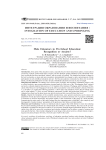
Male educators in pre-school education: recognition or anxiety?
Статья научная
Introduction. Some parts of the education system, especially the pre-school and primary phases, remain almost exclusively “female” professional niches, and for years this dramatic gender imbalance in the educational workforce worldwide has been considered “natural” and not worthy of research. The situation has begun to change in the last two decades, as more and more researchers internationally have begun to study various aspects of male participation in early childhood education and care. The Russian academic community has been slow to join the debate, and Russian publications on males in Early Childhood Education and Care are next to naught.
Бесплатно

Modeling the meaning of individual words using cultural cartography and keystroke dynamics
Статья научная
Introduction. Revealing the psychologically real, individual meaning of the word as opposed to its dictionary meaning is the important task since such knowledge is crucial for effective communication. This is especially true for the words which denote key ideas and concepts of the culture. The word association experiment has been one of the most used methodologies to examine individual meaning of the word but it has been heavily criticized because of its subjectivity. In some of the recent works, data from language models and methods of vector semantics have been used to solve this problem. However, firstly, the very set of the features by which the meaning of the word is described is not uniform, which does not allow for a comparison of the results, and, secondly, some other types of data related to word production (i.e., behavioral data) are typically not taken into account. The aim of the present study is to reveal and systematically describe individual differences in the psychologically real meaning of the particular key words of the Russian culture using a new methodology which could be applied to any word association task. We propose to analyze data of different types (semantic features and keystroke dynamics markers) obtained during word association production to reveal individual differences in the word meaning.
Бесплатно
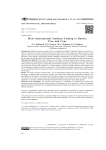
More International Students Coming to Russia: Pros and Cons
Статья научная
Introduction. Despite numerous research works on international students’ training at Russian universities, no analysis of efforts to increase student body has been made so far. In this paper, the authors analyze various aspects of policies aimed at increasing international students’ body (economic advantages, sociocultural benefits, education system changes, international students’ adaptation management). The goal of the paper is to consider the advantages and disadvantages of the international students’ rise in the total population of Russian universities. Materials and Methods. The study comprised several stages, including statistical data screening, analysis of international students’ adaptation measures efficiency, the education process participants’ survey and observation of the activities of public agencies responsible for international students’ stay and study in Russia. The survey involved about 100 university employees, an equal amount of small and medium business representatives and 500 international students from Russian universities. 500 international students participated in a questionnaire survey, and digital content of Russian universities’ websites has been analyzed in order to obtain data necessary for the study. Results. The study revealed a trend toward a rise in international student body at Russian universities, with advantages including higher universities’ incomes, jobs preservation despite the demographic instability, and development of the region’s small and medium business owing to an increased demand for goods and services. The trend also provided socio-cultural and educational benefits and revealed the need to manage students’ adaptation, as well as to establish and develop interaction between universities and federal agencies. Discussion and Conclusion. The research results provide a contribution to education and student body management and regional business strategy planning. The findings may be of assistance to heads of recruitment agencies and bodies responsible for accompanying international students at the place of stay, as well as to service industry managers.
Бесплатно
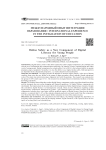
Online safety as a new component of digital literacy for young people
Статья научная
Introduction. Digital literacy refers to the skills required to achieve digital competence, the confident and critical use of information and communication technology for learning, leisure, communication and future work of young people. Digital competence has a dual nature. First of all, it is the technical ability to operate programs, pages, equipment. Secondly, it is also the ability to use digital media safely. Both perspectives are important in the educational perspective, i.e. media education and socialisation. Materials and Methods. The paper presents the attempts to measure digital literacy in the area of threats resutling from using the new media in the group of upper-secondary school students (fourth educational cycle). The study was carried out using a diagnostic test with 18 questions. The research was conducted in the group of 1693 youths aged 15-21. The research was designed based on traditional methods of testing knowledge and skills. Results. The findings showed that the weakest digital literacy component was the copyright-related knowledge and the strongest area was online shopping and financial operations. All digital literacy components are interrelated. The improvement in one area leads to the development of other digital literacy elements. Despite this correlation, digital literacy is a heterogeneous concept. There are also differences regarding certain digital literacy components, determined by gender - girls obtained higher test results in terms of the soft competencies whereas boys were better with the technical aspects of digital literacy. Based on the cluster analysis, we noticed that 41.41% of the students obtained good and very good results from the competence test. More than half of the students require further education in most of the analysed areas. Discussion and Conclusion. For educational decision-makers, the findings highlight the importance of designing training programs aimed at developing students' digital literacies, with a special focus on new topics as sexting, piracy and cyberbullying.
Бесплатно
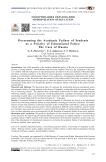
Overcoming the Academic Failure of Students as a Priority of Educational Policy: The Case of Russia
Статья научная
Introduction. One of the priorities of the modern educational policy of Russia is to ensure the academic success of young students – schoolchildren and university students. However, the realization of this goal is in conflict with other objectives of educational policy and factors in the development of Russian higher education, including initiatives in the field of school education. Traditionally, academic failure is interpreted as an individual’s phenomenon related to the inefficiency of pedagogical approaches and technologies. However, in fact, the social scale and context of the problem make it necessary to consider it as an institutional phenomenon, the prerequisites of which are formed at the level of pre-university education. The purpose of the article is to interpret the problem of academic failure of students in the context of educational policy. Materials and Methods. The theoretical basis for studying the relationship between educational policy and academic failure of young students is the theory of inequality in education and the concept of the policy of “choosing winners”. The empirical basis of the article is the results of a study carried out using the following methods: analysis of documents (scientific publications, regulatory documents, statistical and monitoring research data), semi-formalized expert interviews with representatives of educational organizations in Yekaterinburg and the Sverdlovsk Region (n = 30 people). Results. Government initiatives aimed at reducing inequality in education are shown as an institutional context for overcoming academic failure of young students, covering pre-university education. The contradictions of such state initiatives in Russian education as the Unified State Examination, a project to support schools with low learning outcomes and/or schools operating in difficult social conditions, and the Academic Olympics movement are revealed. It is proved that the problems of implementing institutional initiatives in school education serve as prerequisites for the formation of academic failure of university students. Discussion and Conclusion. The practical significance of the research results is seen in the justification of the directions for improving government initiatives and projects to support students to overcome their academic failure. Further analysis of the latent contradictions of the Russian education system in the context of the introduction of institutional measures to overcome the academic failure of schoolchildren and university students seems promising.
Бесплатно

